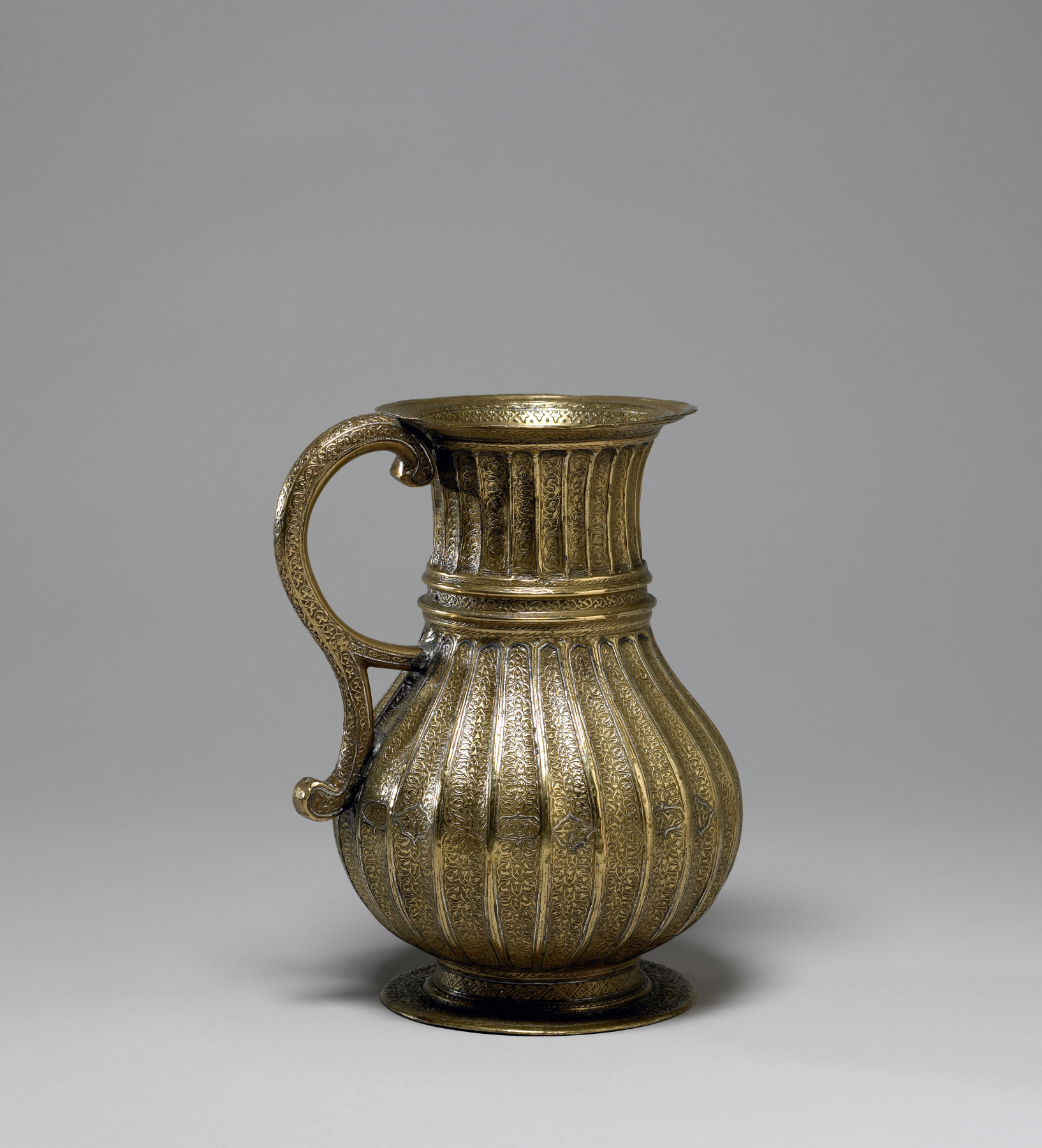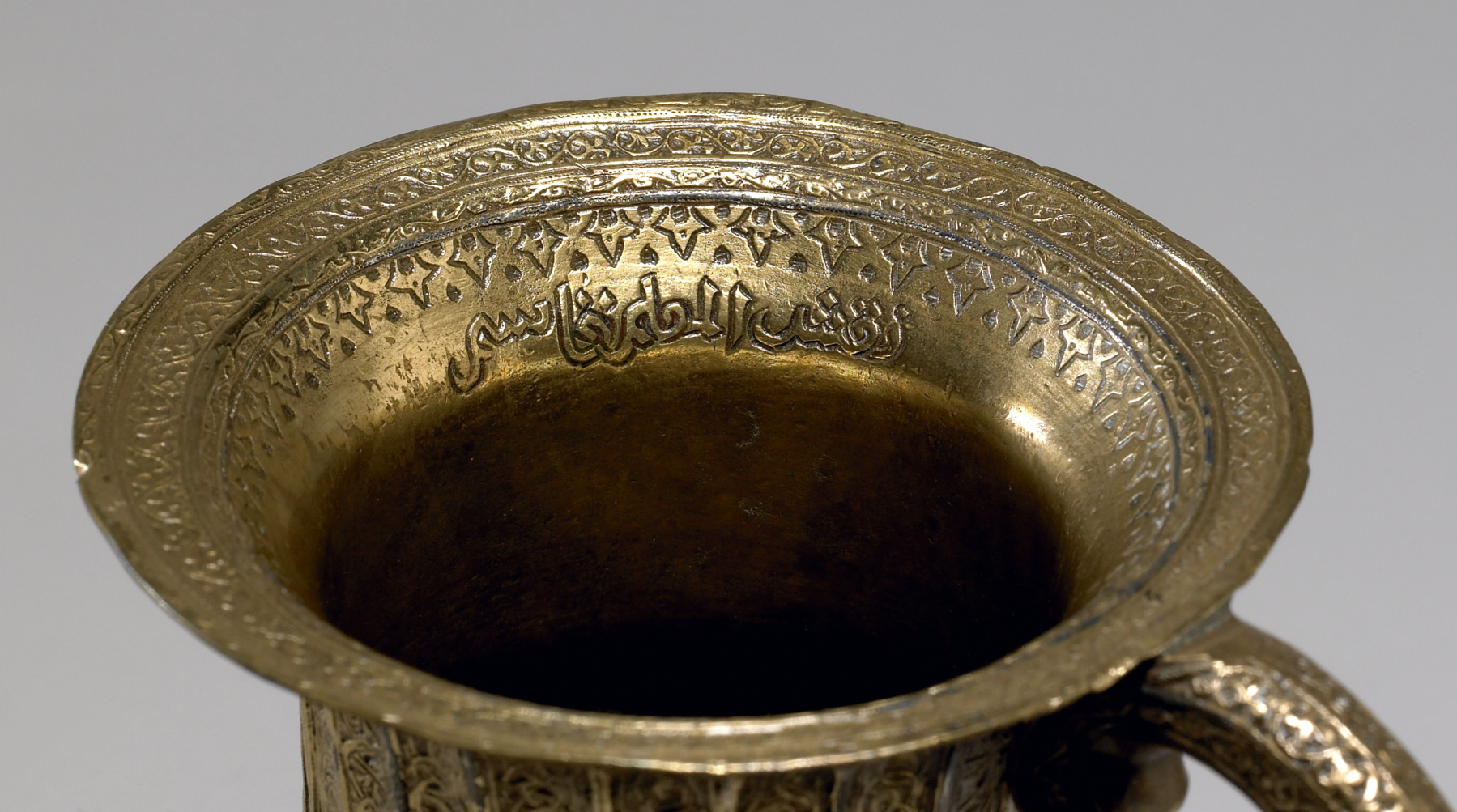Jug
This fine jug exemplifies the way that the style of Islamic metalwork was adapted for the European market. It is decorated with arabesques, but there are no medallions or inscriptions typical of Islamic design. Once believed to have been produced in Venice by Muslim metalworkers, this jug is now thought to come from Iran. The signature on the inside lip reads: "Decorated by master Qasim."
Inscription
Provenance
Provenance (from the French provenir, 'to come from/forth') is the chronology of the ownership, custody, or location of a historical object. Learn more about provenance at the Walters.
Paul Garnier Collection, Paris; Joseph Brummer, New York [date and mode of acquisition unknown]; Joseph Brummer Sale, New York, May 11, 1949, Part II, lot 135; Walters Art Museum, 1949, by purchase.
Exhibitions
| 2006-2007 | Venice and The Islamic World, 827-1797 (Venise et l'Orient). Institut du Monde Arabe, Paris Cedex 05; The Metropolitan Museum of Art, New York. |
| 1971-1972 | World of Wonder. The Walters Art Gallery, Baltimore. |
Conservation
| Date | Description | Narrative |
|---|---|---|
| 3/1/1950 | Treatment | cleaned; coated |
| 1/8/1960 | Treatment | cleaned; coated |
| 4/7/2005 | Loan Consideration | examined for loan |
| 9/5/2006 | Treatment | cleaned; repaired |
Geographies
Iran (Place of Origin)
Measurements
with handle: 7 3/16 x 5 1/2 x 4 13/16 in. (18.3 x 14 x 12.3 cm) (diam.)
Credit Line
Museum purchase, 1949
Location in Museum
Accession Number
In libraries, galleries, museums, and archives, an accession number is a unique identifier assigned to each object in the collection.
In libraries, galleries, museums, and archives, an accession number is a unique identifier assigned to each object in the collection.
54.2334




